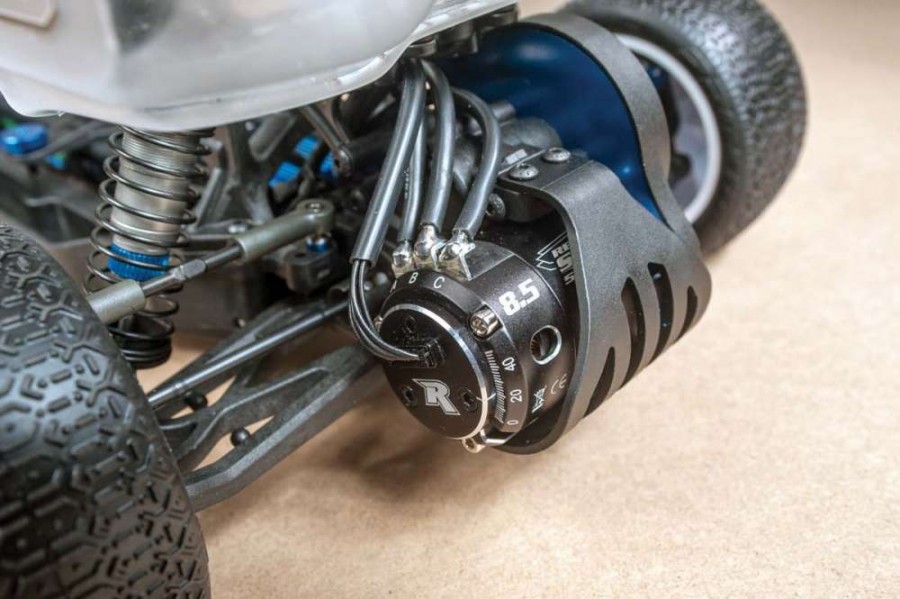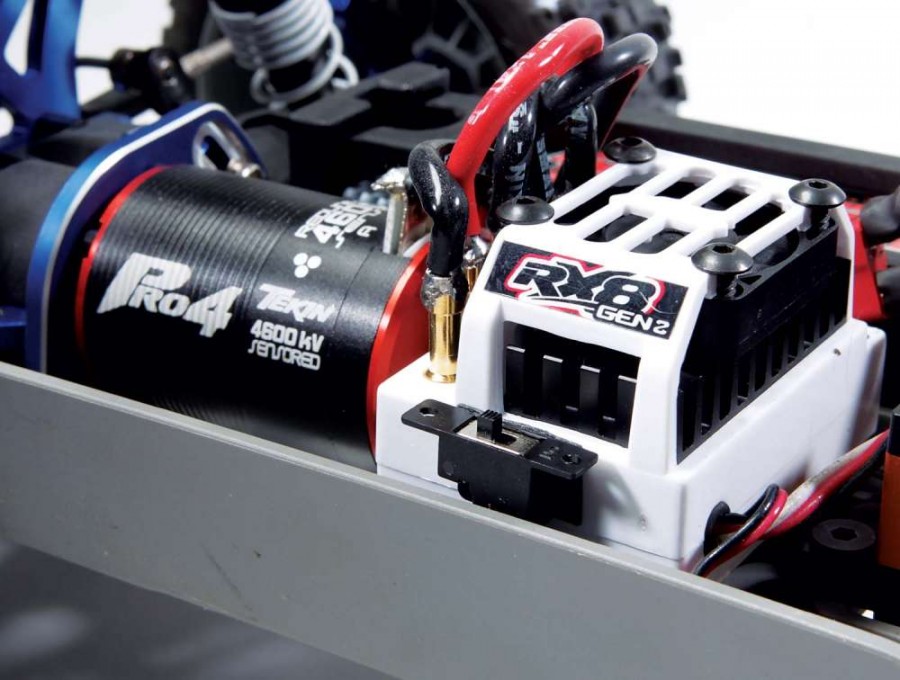On RCDriver.com we try to explain complicated topics in the RC world. Often, a lack of information or of time results in most of us having to take the word of the masses or trust in our hobby shop sales staffers. This is not always a comforting way to go about your hobby pursuits. So this month we’ll take a look at the core differences in the motors that are available for popular vehicle classifications.
FITMENT BASICS
When you look into motors, most of the time you are somewhat limited by the type of vehicle it’s going into and the gears being used. Today, it’s easier than ever to fit motors into more vehicles since mounting plates, pinion gears and even spur gears are available in various different pitches and motor shaft sizes. This doesn’t always mean that just because it fits and can be used, it should be. What the vehicle is designed for, or more accurately what the drivetrain will handle, should be the main area you’re considering. At a minimum, be prepared for the consequences of using way too much motor or the wrong size motor in a vehicle. Handling and the basic response can be affected pretty drastically.
MOTORS SIZED UP
Most 2WD off-road RC cars and trucks are suited for a more standard 540 size, two-pole brushless motor, and a handful of fourpole sensorless setups as well. Most of the higher power 550 motors have 5mm pinion shafts, so they require special pinion gears but are still a bit heavy and over powered for standard 2WD setups. There are folks that love the 550 setups in their 2WD trucks for wild and crazy 2WD power.
That moves us to the next point, the motor’s basic size and poles. The size is fairly straightforward. Starting with 540 and moving up to 550 and 1/8-scale motors, each is basically larger than the previous. The 540 to 550s are mainly longer, with 1/8-scale motors being larger in both diameter and length, generally made for higher voltage applications and specific 1/8-scale setups. The 540 and 550 motors are commonly found in twopole and four-pole configurations. The “poles” are the number of north and south ends on the motor’s rotor/magnet. This pole factor determines the core characteristics of the motor’s favored operating range. Four-pole motors like lower RPM ranges and work well on short acceleration tracks. Two-pole motors tend to favor higher RPM applications and can be a bit more efficient overall. Each style of motor is made up of a magnet, the rotor that spins, and the motor’s coils. The coils or “turns”, effect the RPM range of the motor, and its overall power consumption. Lower turn motors have a higher RPM range. This RPM range is measured on some motors by a value called Kv. Other motors only list turns. Lower RPM, or higher turn motors, are better suited for higher voltage applications. Usually, four-pole motors designed for higher voltage have lower Kv ratings. The 1/8-scale motors reflect this as most are designed for 14 volts. Most 1/8- scale motors fall in the 1500- 2200 Kv range, and are all four-pole. The Kv is only a basic RPM range that the manufacturer gives their motors. There are no standards for these values, and they do not reflect the motor’s basic torque characteristics. This is easier to determine by understanding the balance between the motor’s turns/Kv and its poles. A four-pole 550 motor rated at 4000-4500 Kv is suited for 4×4 SCT Racing. A two-pole 540 motor rated at 4000-4500 Kv would not at all be suited for that same application. Only a couple of factors between the two motors are different, but they are completely different motors. Often, there is no real direct correlation between the various sizes and styles of motors.
TO SENSOR OR NOT TO SENSOR
Another topic to add to these factors would have to be the sensorless and sensor based ESC and motor combos. Most racing setups are sensor based, as the finite response of the motor at lower RPM and varying loads is important for a driver. Many of the non-racing setups are sensorless, as full-throttle good times don’t require much in the way of feel or fine control. In fact, sensorless setups’ lack of response is often favored by folks who don’t hit the track or don’t have a well groomed high traction track. Many speed controls are available that offer sensor and sensor-less operation, even offering “dual modes” that combine the two. Sensors allow some additional tuning to the motors as well. The mechanical timing of the sensor board can be used to fine tune the RPM range of the motor and even soften up the motor’s feel. Sensorless motors have fewer parts inside with no sensors and are often a bit lower priced because of this. Many are not made to meet “racing rules” and are not legal for any organized racing.
MAINTENANCE
When you get into the fine details of motors, you will find many are serviceable or repairable. The winding segments, or Stators, as well as magnet rotors, bearings and endbells are typically all replaceable. Most motor manufacturers offer service items on the back end so motors do not have to be tossed if damage occurs. Some motors support swappable parts which allow you to turn a fast motor into a slow motor, or vice versa.
WRAP-UP
Motor shopping can be intimidating, but with the right know-how and a little bit of research, you can go horse power hunting with confidence! Happy wheelies!
by Charlie Suangka
 RC Driver The Best In RC Car & Truck News, Reviews & Video
RC Driver The Best In RC Car & Truck News, Reviews & Video 










what is the cheapest type and what is the smallest type of gas powered RC car engine? what is the name of the engine? where do you find these engines?